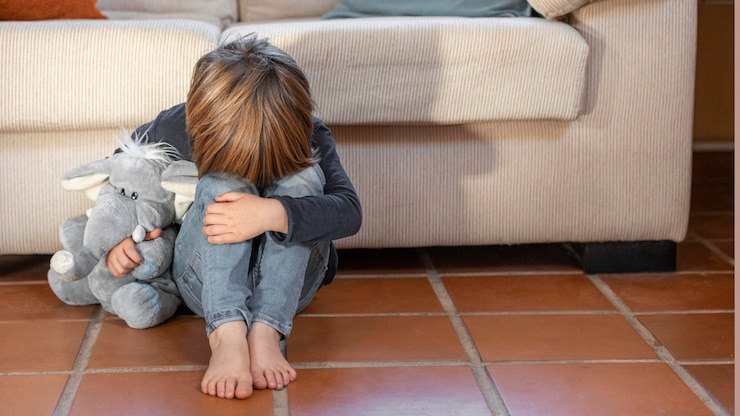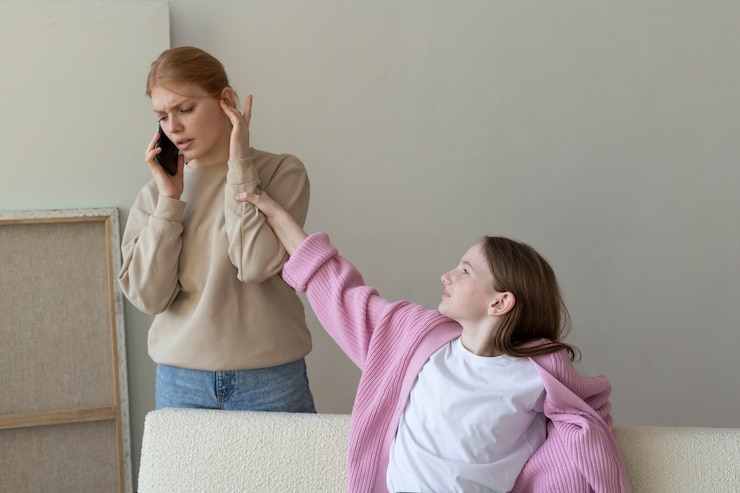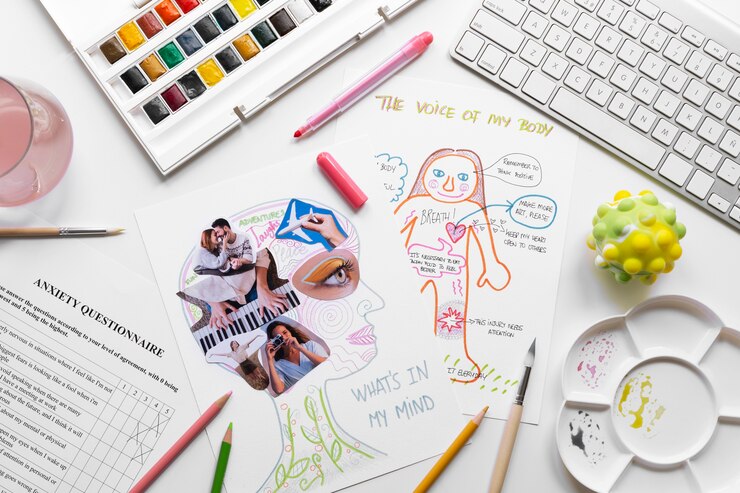
Anxiety symptoms can appear in children from a young age, and while sometimes they’re easy to spot, they can often be subtle or unexpected. Here are 10 anxiety signs in kids that you might overlook.
Table of Contents:
“Could my child have anxiety?”
This is a common reaction from parents who visit my therapy office seeking to understand their child’s puzzling and difficult behaviors.
Many parents try to manage these behaviors with strategies like rewards, consequences, and sticker charts, only to find that the behaviors persist or worsen.
It’s understandable why parents might miss anxiety symptoms in children, as we often imagine an anxious child as being visibly stressed and worried.
Picture an anxious child in your mind. Maybe you envision a young child clinging to their parent on the first day of school? However, anxiety in children doesn’t always look like this.
Parents are often surprised when I explain that their child’s ‘misbehaviors’ might actually be ‘distressed behaviors.’
This happens because of how our nervous system reacts under stress. A child in a fight-or-flight state may seem defiant or unable to listen.
When our brain senses a threat, it prepares our body as if we were in real danger. This is anxiety in action.
Our amygdala, the brain’s emotion center, triggers powerful survival instincts. When factors like genetics, environment, or health conditions create an overactive amygdala, it struggles to differentiate between real and perceived threats.
When the amygdala overreacts and frequently initiates a stress response, we notice survival-type behaviors in children.
Below are 10 anxiety symptoms in children that often confuse parents but are part of the fight-flight-freeze response, as supported by science.
One major symptom that surprises parents is emotional reactivity. Living with chronic anxiety or stress can make anyone more emotionally reactive. When a child’s emotion center is overactive due to anxiety, they may be irritable as all their emotions run on high.
Related read > Anger Management for Kids: A Therapist’s No-Fail Guide to Calm
Repetitive questions, such as repeatedly asking, “How long until we get there?” demonstrate a need for reassurance. Kids with anxiety can feel uneasy when they don’t know what to expect, and they cope by seeking constant information.
Anxiety can make children question themselves and seek reassurance, asking things like, “Will I make friends?” or “Am I a good kid?” This behavior is common in both generalized anxiety and Obsessive Compulsive Disorder (OCD).
Check out >> 75 Calm Down Strategies for Kids (they’ll want to try!)
When anxiety triggers the fight or flight response, the body experiences several changes. For example, the ‘butterfly effect’ happens when the digestive system slows to conserve energy, which is why anxious children often complain about stomach aches.
Related >> 5 Ways to Lower Your Child’s Anxiety Today
Avoidance is another way children cope with anxiety, which can appear as defiance. Common phrases include:
“I’m not doing that!”
“You can’t make me!”
“I won’t do it!”
Children who assert control like this often feel internally out of control, a by-product of anxiety.
::::::: Want practical tools to help your child cope with worries and other big emotions? Get my ‘Calm Kids Set’ for 40% off for a limited time.
Anxious thoughts often appear when the mind is quiet, making it hard for kids to relax and fall asleep. Night waking is common when a child’s brain is on high alert for any disturbances.
>> Need help for your child’s anxiety? Check out courses from Natasha Daniels, who specializes in childhood anxiety
A child’s brain under stress stays in ‘survival mode,’ affecting its emotional center and reducing access to the ‘thinking brain’ in the frontal lobe. This makes tasks like focusing, controlling impulses, and staying organized more challenging.
Tears can seem to come from nowhere, often triggered by changes in routine or minor conflicts. An overstimulated emotion center may cause children to express sadness when everyday challenges arise.
“My child doesn’t listen. She hides under her bed when it’s time for bed and sometimes at school when she doesn’t like activities.”
Running away is part of a ‘flight’ response. When overwhelmed, a child’s brain directs them to escape situations for survival.
Related >> 100 Everyday Ways to Strengthen Your Child’s Mental Health
“I want to stay with you and not go to school.” Being near a caregiver offers comfort and temporarily eases anxiety. The thought of being alone at school can feel overwhelming, making reasoning difficult.
Recognizing behaviors as anxiety-related rather than intentional defiance helps parents understand their child better. Anxiety is real and treatable, impacting daily life across various environments when not managed.
As Karen Young from Hey Sigmund beautifully notes, “Anxiety is the work of a strong, healthy brain that’s a little overprotective.”
Other helpful resources:
If your child experiences anxiety, check out Karen’s book ‘Hey Warrior’ for a kid-friendly explanation of anxiety.
This post was originally published on 10/18/2018 and has been updated.
Equip your child with life skills.
Join 30,000 other parents receiving the Parents with Confidence weekly email and get a free 5-day parenting course where you’ll learn:
* How to protect your child’s self-esteem
* How to gain your child’s cooperation
* The most valuable skill for your child’s future
* How to discipline without emotional harm
JOIN + SEND MY ECOURSE!
We won’t send you spam. Unsubscribe any time. Built with Kit



